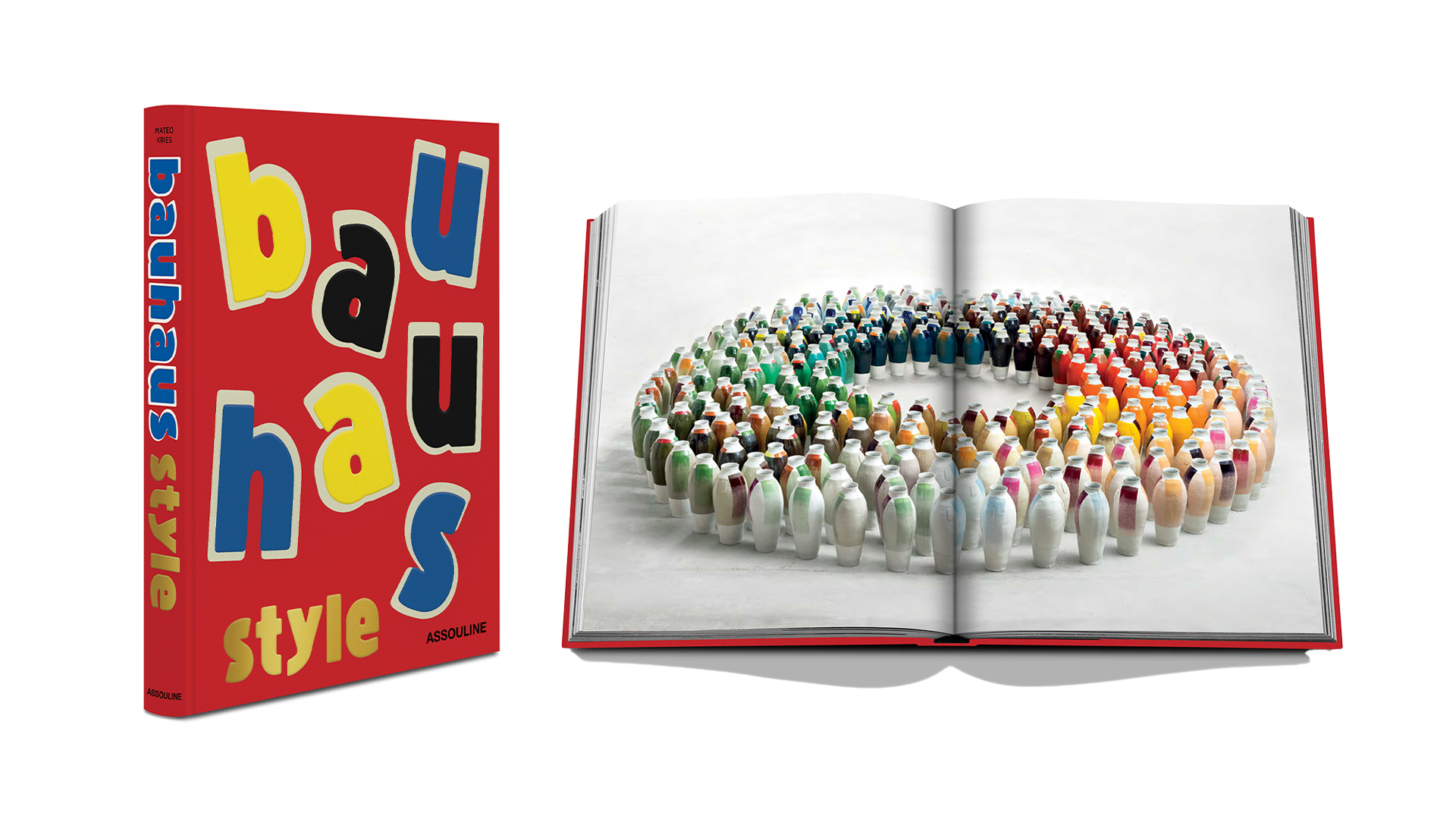Copyright © 2025 Motivate Media Group. All rights reserved.
id library: Bauhaus Style by Assouline
Bauhaus Style — after decades — the movement has lost none of its power

A revolutionary art school and movement of its time – and one that defined a period of modernity in (mostly) the Western world – Bauhaus and its teachings are perhaps as relevant today as they were at the start of the twentieth century. While more designers carve their niche outside of traditional modes and settle in intersectionality, the interdisciplinary programme feels necessary again in our day and age: instead of dividing disciplines, cross-fertilisation among the various practices of its teachers, artists and craftspeople can became a model once more.

Gargarin House I in Litchfield, Connecticut, designed by Marcel Breuer, 1956-57. Photography by Mark R. Madonna
“Let us strive for, conceive and create the new building of the future, which will unite every discipline – architecture, sculpture and painting – and which will one day rise heavenward from the million hands of craftspeople as a clear symbol of a new belief to come,” architect Walter Gropius wrote in the Bauhaus Manifesto in 1919 – an attitude stands strong even today.

Interior of an ad agency office in Madrid, designed by Iñigo Aragón and Rodrigo Aragón of Casa Josephine with Mondrian-inspired geometrics. Photography by Belén Imaz.
The new publication by Assouline, authored by Mateo Kries, is a review of the Bauhaus style and looks at the evolution of modern life, from its political and social attitudes to its continuing impact on popular design. New perspectives on the school have emerged over the decades, with every generation interpreting the Bauhaus repertoire anew; yet, whether its style or its societal critique is adopted, its aesthetic continues to offer new ideas for designers of interiors, furniture, consumer products, fashion and architecture.

LONDON, ENGLAND – FEBRUARY 18: A model walks the runway at the Mary Katrantzou Autumn Winter 2018 fashion show during London Fashion Week on February 18, 2018 in London, United Kingdom. (Photo by Catwalking/Getty Images)
“I think the Bauhaus will speak to new generations of designers, but in different ways than today, just as its perception has evolved over the past century,” says Kries, who has been curator of the Vitra Design Museum since 1995 and is currently the director of its Berlin branch.

Mandatory Credit: Photo by IBL/Shutterstock (10366307f)
The school existed in Germany from 1919 to 1933.It was based in Weimar until 1925, Dessau through 1932, and Berlin in its final months.
Staatliches Bauhaus, School of Design, Architecture, and Applied Arts, Dessau, Germany – 04 Jun 2019
“In the post-war era, it has been seen mainly as a stylistic movement, while in contemporary times the Bauhaus’ social impetus [was] much more relevant than its mere aesthetic. Though I can’t predict its translation in twenty years, I could see the Bauhaus inspiring a rediscovery of crafts as a sustainable practice – after all, it was the Bauhaus movement that proved craftsmanship and modern design are in fact not opposites but perfectly complementary,” he continues. Kries also adds that while many books have already been written about the modern movement, “Assouline’s book offers a more playful and subjective approach to the Bauhaus world.”

Heidi Abrahamson, architectural ring of silver and gold, 2015. Photography courtesy of Lisa Cliff Collection.
The eclectic volume curates impactful images of architecture, art, objects, graphic design and fashion from the past 100 years, encapsulating the enduring modernity of the Bauhaus style.

See more of Assouline here.
More of id library? Click here.
The Latest
Textures That Transform
Aura Living’s AW24 collection showcases the elegance of contrast and harmony
Form Meets Function
Laufen prioritises design, functionality and sustainability in its latest collections
Preserving Culture, Inspiring Creativity
Discover the Legacy of a Saudi Art Space: Prince Faisal bin Fahd Arts Hall explores the Hall’s enduring influence on the cultural fabric of Saudi Arabia
Channelling the Dada Spirit
Free-spirited and creative, The Home Hotel in Zurich injects a sense of whimsy into a former paper factory
id Most Wanted- January 2025
Falaj Collection by Aljoud Lootah Design
Things to Covet in January
identity selects warm-toned furniture pieces and objets that align with Pantone’s colour of the year
Shaping the Future of Workspaces by MillerKnoll
Stacy Stewart, Regional Director Middle East & Africa of MillerKnoll discusses the future and evolution of design in workspaces with identity.
Shaping Urban Transformation
Gensler’s Design Forecast Report 2025 identifies the top global design trends that will impact the real estate and built environment this year
Unveiling Attainable Luxury
Kamdar Developments has launched 105 Residences, a new high-end development in Jumeirah Village Circle.
The Muse
Located in the heart of Jumeirah Garden City, formerly known as ‘New Satwa’, The Muse adds to the urban fabric of the area
Cultural Immersion Meets Refined Luxury
The Chedi Hegra opens its doors in AlUla’s UNESCO World Heritage Site
Redefining Coastal Luxury
Sunshine Bay on Al Marjan island combines seaside views, exceptional design, and world-class amenities to create a unique waterfront haven
















